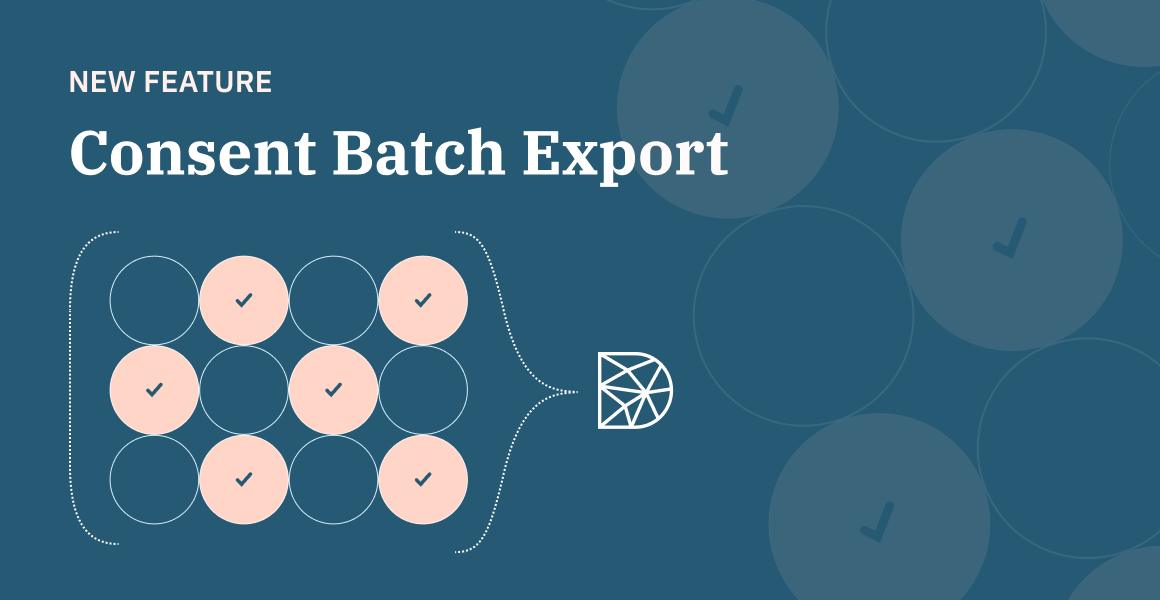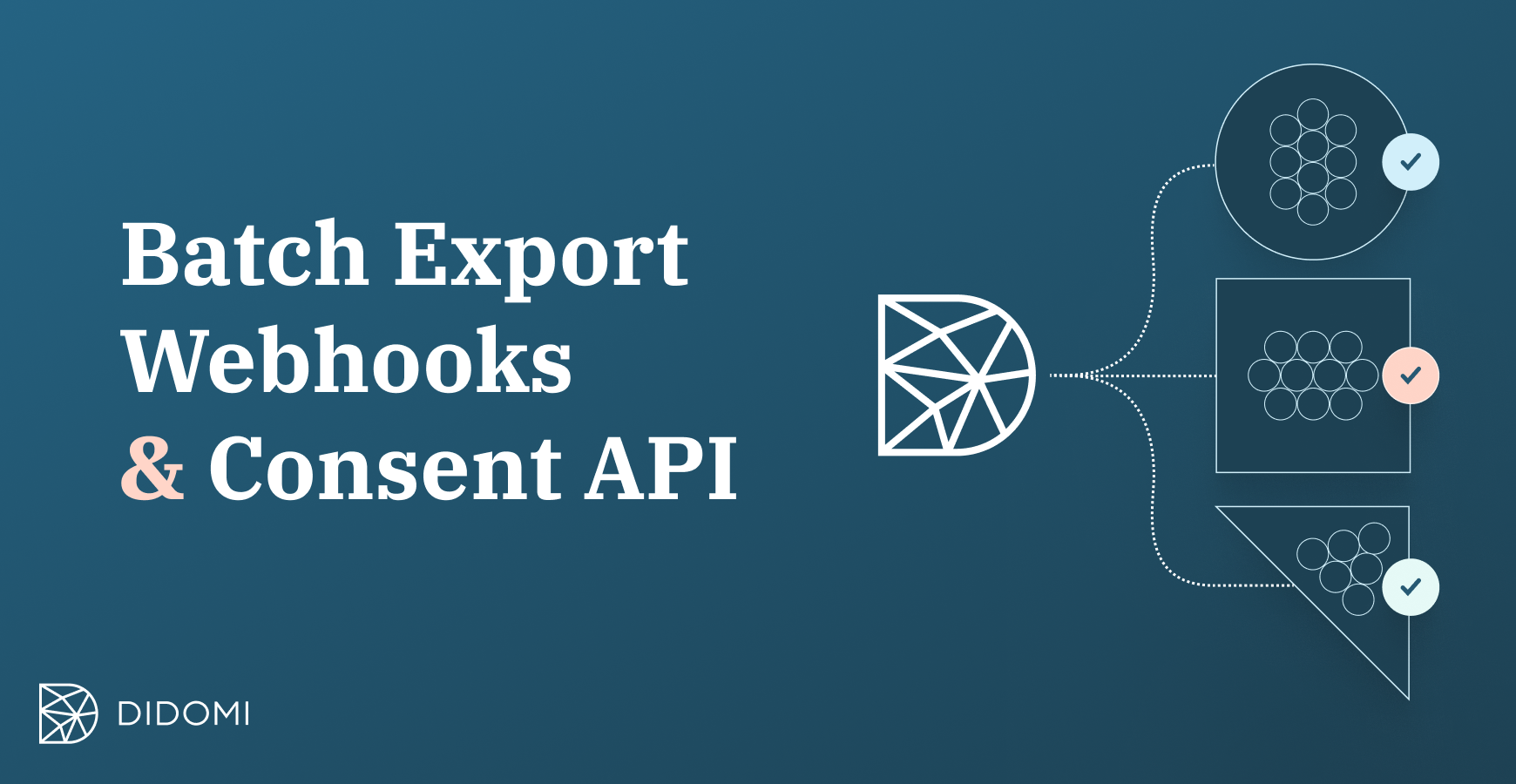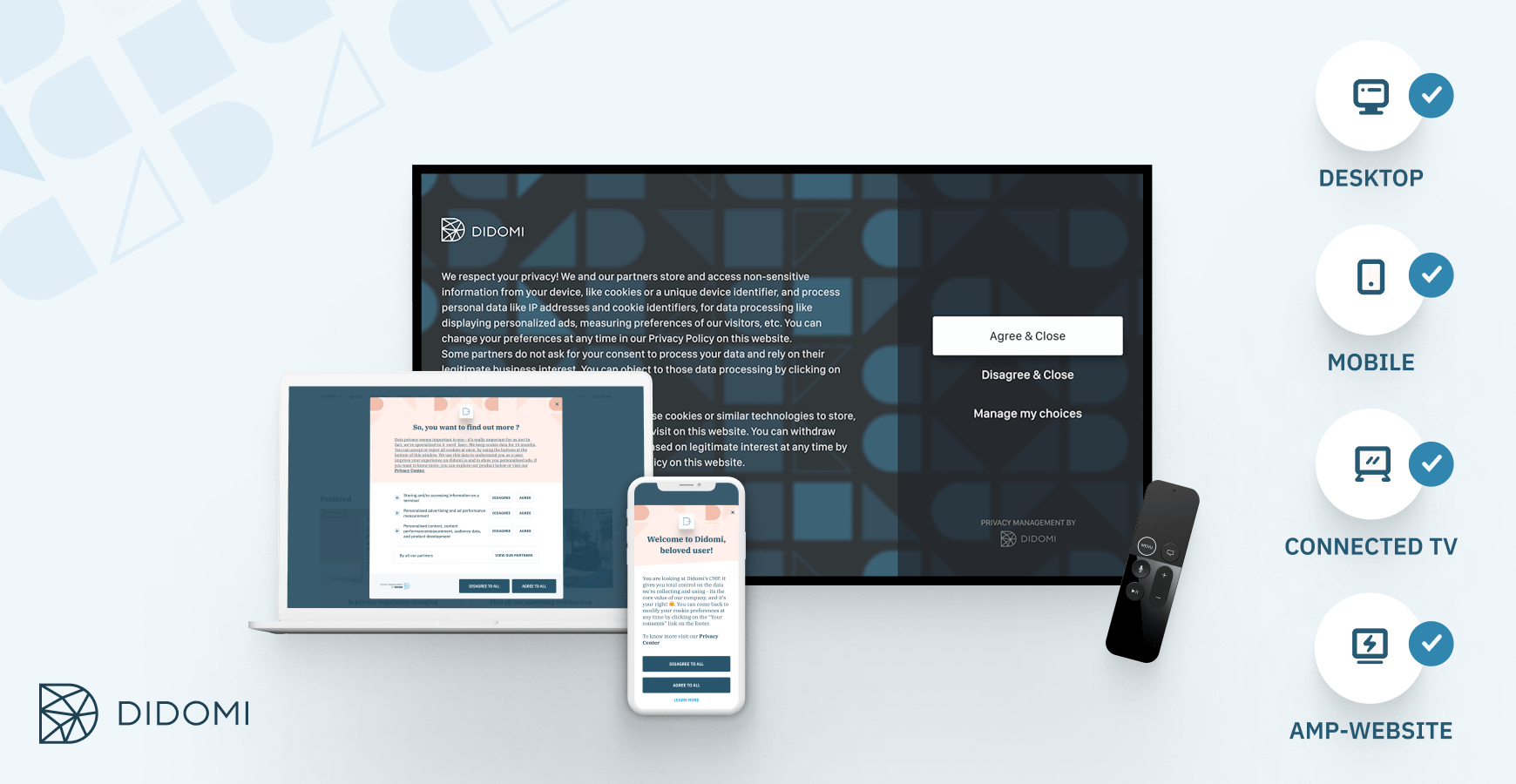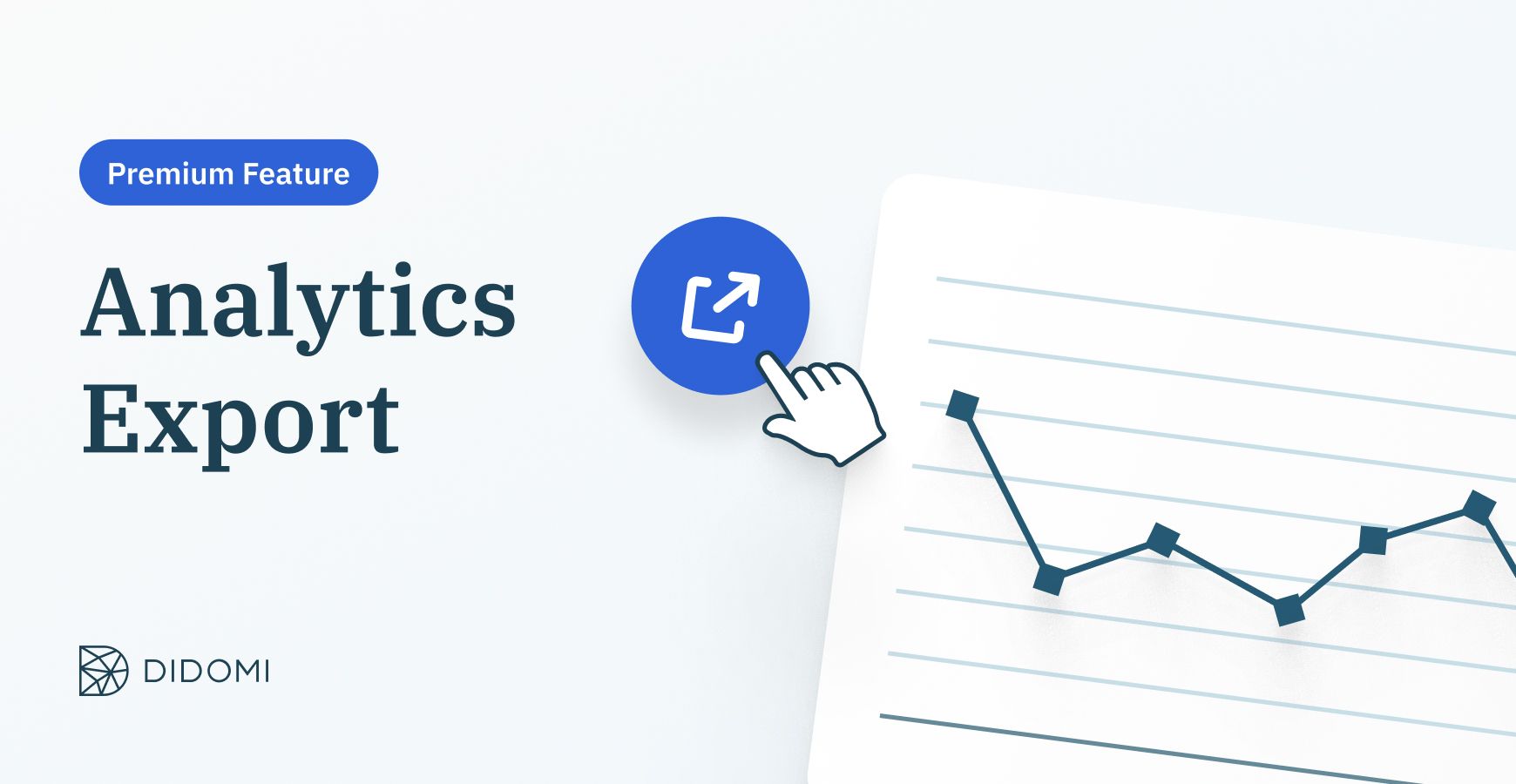Didomi is proud to reveal our newest integration: Batch Export! Before, publishers had no access to consented users’ data in bulk, only one by one. With the Batch Export feature, they are able to export batches of user consent data collected by Didomi. What are the benefits of this new feature? And how can it be implemented? Carry on reading for more information.
Summary :
What is Batch Export?
Today, Didomi offers integrations connected to the Didomi Platform such as Consent API and Webhooks. We are now happy to reveal our newest addition: the Batch Export feature.
How does Batch Export differ from other integrations?
The Batch Export feature differs from our two other integrations by pushing all user choices at the same time, placing them in storage buckets.
In contrast, Webhooks pushes the data as well, but only one user choice at a time, while the Consent API pulls the data.
The Didomi Batch Export feature allows clients to access all consent data (not page views) collected through the Didomi platform (consent notices, APIs, Preference Center) at once.
Why the need for the Batch Export feature?
Before, publishers had no access to consented users’ data in bulk, only one by one. With the Batch Export feature, they are able to export batches of user consent data collected by Didomi.
For our clients, Batch Export is the way to go in terms of scalability and promotes no risk of loss of data. It introduces a flexible and scalable way to export and access user consent data.
In turn, this opens up new potentialities for leveraging user consent data for business use cases like analytics, data science, or simply on-premise backups.
|
"Batch Export allows our customers to get a full copy of the consents collected for their users to leverage them in business use cases like analytics, data science, or simply on-premise backups. It gives more flexibility to our customer with the ability to access and export batches of user consent on top of real-time data access via our Consents API or Webhooks." - Jawad Stouli, Didomi CTO |

Use cases: What are the benefits of Batch Export?
So, what are the specific benefits of implementing the Batch Export feature? Evidently, the specific use cases vary depending on the needs of our clients, but here are some key advantages to exporting batches of user consent data in bulk.
The Batch Export feature allows you to:
-
Cross consent data with business data: the Batch Export feature allows companies to group Didomi consent data with other business data that is not related to Didomi, allowing clients to map data together for overall visibility and a complete profile.
-
Centralize or back up user choices in an external system: Thanks to Batch Export, companies can store all their data in one place, backing up user choices in their own external database.
-
Map Didomi data onto other dashboards used by the company: With the Batch Export feature, consent metrics can be computed alongside other company metrics. Consent can be mapped onto dashboards (alongside other data that is not related to Didomi) for analytics purposes.
-
Integrate Didomi data within business tools (CRMs, marketing automation etc.): Not only are companies able to map Didomi data with data that is not related to Didomi in their companies systems, they are also able to integrate this data within business tools, such as CRM and marketing automation technologies.
See all the benefits of Batch Export in this short video created by Didomi for you:
Ultimately, Batch Export changes the game in terms of data mapping and visualisation.
Regrouping Didomi data and data that is not related to Didomi in one place redefines the way that companies are able to handle user consent: both in terms of storage and proof, but also in terms of analytics.
📢 PRODUCT ANNOUNCEMENT 📢
— Didomi (@Didomi_io) August 9, 2021
Access + export all your user consent choices in bulk to leverage the data in business use cases like analytics, data science, or simply on-premise backups. 📈#BatchExport #Integration #CMP pic.twitter.com/20dGCHGoc3
How can Didomi clients integrate the Batch Export feature?
So, how can you integrate the Batch Export feature?
Batch Exports consist of two main components:
-
Export configurations define the type of data to export.
-
Export destinations define the cloud storage (bucket) that will receive the data and the credentials to connect to them.
Consequently, taking into consideration these two components, there are two main steps to set up Batch Export.
1. Configure an export destination to indicate where the data should be sent.
Clients have 2 choices on where they would like their data to be sent, either a GCP Storage Bucket, or an AWS S3 Bucket (owned by Didomi).
Didomi can either push exported data directly to a GCP storage bucket, or to a dedicated bucket for your organization, with delegated access to your AWS account.
2. Configure an export configuration to schedule the delivery of the data.
Clients are then able to schedule a daily batch export that will deliver the data to the configured destination.
When the Batch Export feature is configured, customers will get the export dropped in the location configured in agreement with Didomi (either a GCP Storage Bucket or a AWS S3 Bucket), every 24h.
How long does it take to be properly up and running? The first batch of data is delivered in as little as 24 hours after the creation date of the export configuration.
Interested in configuring the Batch Export feature?
It is important to note that Batch Export is a premium feature, reserved for Didomi clients. If you are a Didomi client interested in configuring the Batch Export feature, reach out to your Customer Success manager to discuss the configuration.
Uncertain about which data transfer method would work best for your specific business needs? Check out this article.
If you are not yet a Didomi client, but are interested in finding out more about this feature (and any others!) then please schedule a call with us, we’d love to discuss!







